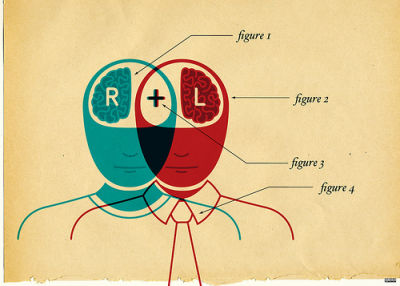When Business Objectives And User Experience Clash
Here’s a question for you: would you agree that creating a great user experience should be the primary aim of any Web designer? I know what your answer is… and youʼre wrong!
Okay, I admit that not all of you would have answered yes, but most probably did. Somehow, the majority of Web designers have come to believe that creating a great user experience is an end in itself. I think we are deceiving ourselves and doing a disservice to our clients at the same time.
The truth is that business objectives should trump users’ needs every time. Generating a return on investment is more important for a website than keeping users happy. Sounds horrendous, doesn’t it? Before you flame me in the comments, hear me out.
The Harsh Reality
Letʼs begin with the harsh truth. If an organization does not believe that it will generate some form of a return on an investment (financial or otherwise), then it should not have a website. In other words, if the website doesn’t pay its way, then we have not done our jobs properly.
Despite what we might think, our primary aim is to fulfill the business objectives set out by our clients. Remember that creating a great user experience is a means to this end. We do not create great user experiences just to make users happy. We do so because we want them to look favorably on the website and take certain actions that will generate the returns that our clients want.

User Experience Is Important
Let me be clear. Iʼm not suggesting that user experience is unimportant. In fact, I believe that creating an amazing experience is the primary means of helping a website fulfill its business objectives. A well-designed website makes it easy for users to complete the calls to action we have created.
Happy users also provide many other benefits. They can become advocates for your website. A happy user is considerably more likely to recommend your services and is more patient when things occasionally go wrong. Enthusiastic users can also become valuable volunteers; they have innumerable ideas about how your website and products can be improved. They are far more valuable than any focus group!
The point, though, is that happy users generate a return on investment, so spending the time and effort to give them a great experience is worth it.
Business Objectives vs. User Experience
You may argue that this is all semantics and that business objectives and user experience actually go hand in hand. Generally, I agree, but there are occasions when the two clash, and at these times, we need to be clear that generating a return on investment should trump user experience.
Let me give you an example. We Web designers often complain when clients ask us to add fields to their online forms because they want to collect certain demographic information about their users. We argue, rightly, that this annoys users and damages the user experience. But we need to ask ourselves whether those additional fields would make users not complete the forms at all—as we fear—or would just slightly irritate them. If users ultimately complete the form and the company is able to gather valuable demographic information, then the slight irritation may be worthwhile.
Do You Have The Right Balance?
Iʼm a little nervous about this post because I realize that many people could misinterpret what Iʼm saying. But I passionately believe that the Web design community is in danger of becoming blind to all else but user experience. Iʼm convinced we need to spend as much time and effort on understanding and achieving business objectives as we do on creating a great experience.
I’ll end with this: during your last project, how much time did you spend creating personas, testing usability, and generally improving the user experience? How does that compare with the amount of time you spent learning about the client’s business objectives and creating great calls to action?
Ask yourself whether you got the balance right.
Further Reading on Smashing Magazine
- “Strategic Design: 6 Steps For Building Successful Websites,” Dmitry Fadeyev
- “So You Want To Write A Digital Strategy?,” Paul Boag
- “How To Streamline Creative Dialogue,” Thomas Joos
- “How Even Small UX Changes Can Result In An Increase In Conversion (A Case Study),” Denis Studennikov

